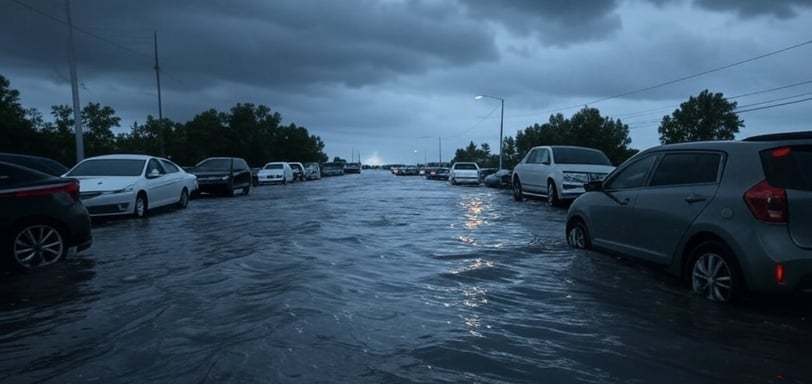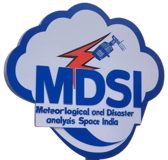Natural Disaster Prevention: Strategies and Actions- The Meteorological and Disaster Analysis Space India (MDSI)
Natural catastrophes, renowned globally for their catastrophic impacts on ecosystems and people around the globe, are essential to maintaining a balance between human well-being and the environment. Sometimes, humans manage the land poorly and fail to take appropriate preventative measures, which results in significant social, environmental, and financial losses that are bigger than those caused by the destructive natural occurrence itself.
Dr Raman
3/3/20254 min read


Definition of natural disasters:
Known by many as natural disasters or catastrophes, a plethora of catastrophic natural events occur annually that do harm to both the environment and society.
The force of destruction resulting from these events is the cause of their harmful effects. The primary destructive characteristics that define the much-feared natural catastrophes include strong winds, enormous seas, searing flames and ash, among other physical variables. When faced with them, it's critical to develop preventative measures and awareness campaigns that hold the public and governments alike accountable.
These additional articles on the seven natural disasters produced by humans and the types of natural disasters that exist can teach you more.
The steps to avert natural disasters:
Reducing the negative effects that natural disasters bring about, in terms of material and environmental destruction as well as the loss of human life and other living things, is the primary goal of initiatives aimed at preventing them. Depending on whether the natural catastrophe is a storm, an earthquake, a volcanic eruption, a fire, a flood, or a tsunami, we will describe in this section the best course of action to avert it.
Prevent fires:
Once you get at a meeting place designated for this in the event of a fire, follow the exit signs. Avoid using the elevators if we are in a building that is close to a fire and, more importantly, if the building has taken fire. Remain away from structures and big trees that could collapse due to the fire. Cover up to keep your skin from getting into touch with the flames and wear a mask to keep your lungs clear of the noxious chemicals released while the fire burns. We go over how to stop forest fires in further detail in this other post.
Prevent floods:
The primary preventive precaution against flooding is to seek refuge on naturally occurring terrain at a height of at least thirty meters above sea level. Avoiding riverbeds and coastal regions is crucial, as is being mindful of the potential rise in water levels in places that might get stagnant and flood (such as sewers and holes in the road).
The most important thing to do in the event that flooding results from a tsunami's destructive activity is to avoid the shore, as this is where the majority of the destruction occurs. Preventive precautions must be kept in place during this time since the motion of the tsunami can produce deadly waves frequently—roughly ten waves in a 12-hour period. Visit this page to find out more about the formation of tsunamis.
Additionally, you may view information about the causes and effects of floods by clicking on this link.
Hurricanes:
Being prepared for the hurricane's arrival with a shelter, supplies of food and water, and other necessities, as the storm's destructive effects will likely require them to spend some time apart.
When the hurricane passes near windows, doors, and other locations that might be flooded or damaged by the hurricane's high winds and storms, place protective structures there and stay away from them.
Volcanic eruptions:
The degree of intensity of the activities required will depend on the power and pressure of the volcanic eruption, together with the materials (lava, ash, and gases) that have been released.
It's critical to avoid being in the eruption's path and to close windows and doors to prevent breathing in ash and fumes that might cause respiratory issues.
Avoid locations that are prone to landslides as well, as the intensity of the eruption may cause tremors and an avalanche of debris that pushes the ground away.
Earthquakes:
If there is an earthquake, the most important thing to do is to be cool and, if we are within a building, follow the evacuation orders.
Standing beneath a table or other piece of furniture will always be beneficial since it will shield us from flying lights and other objects, shattered windows, and shattered glass.
Avoid using the elevators and, if you're driving, pull over if you travel somewhere without any buildings or big trees that might topple from the power of the earthquake.
Preventative measures for natural catastrophes:
The most crucial actions to take in each kind of natural disaster scenario—such as preventative measures for catastrophic catastrophes and loss of life—have been outlined in the preceding sections. In summary, the following are some preventative methods for natural disasters to minimize their impact or stop them from occurring:
Building a shelter or getting bunkers ready for a disaster.
In the fields and woodlands, provide firewall areas.
Report any occurrences that we witness that could result in a natural catastrophe (such as bonfires burning in unapproved areas).
Conduct control studies of such occurrences in order to determine the most likely time, location, and force of the calamity. When necessary, prompt evacuations can be carried out with this knowledge.
Build as safely as you can (avoid placing structures on the sides of volcanoes, on the beds of big rivers, etc.).
to obtain the reduction of pollution (by people as well as by governments and huge businesses).
Steps to follow in the event of a natural disaster:
In the case of a natural catastrophe, action plans must be developed that address the medium- and long-term as well as the short-term execution of initiatives. Therefore, the following four phases, arranged from greatest to lowest priority, contain the short-term measures that we must take more quickly during the natural catastrophe. Remember the following when faced with a natural disaster:
Keep calm.
Follow the instructions of any person with civil liability (police, firefighters, security forces …).
Do not push or run over other people when trying to get out.
Find the most suitable hiding place or shelter (high places in case of floods, under tables during earthquakes, etc.).
But, in order to attempt to respond to natural catastrophes in the most ideal and responsible manner feasible, medium- and long-term preventive action plans will also be required. Stocking stockings for preventing natural disasters They are predicated on policies, plans, initiatives, and laws that permit, on the one hand, the responsible use and protection of regions vulnerable to natural catastrophes, while, on the other hand, outright forbidding the habitation of places with a high potential for harm.
Email- contact@metdisasterindia.space
2025@ The Meteorological and Disaster Analysis Space India (MDSI) | All right reserved.
Terms & Conditions Privacy Polic Cookie Policy
User Agreement for License Subscription
-Safety Lies in Caution-
Get Your Meteorological and Disaster Analysis Space India (MDSI) License Today for safe Tomorrow!
